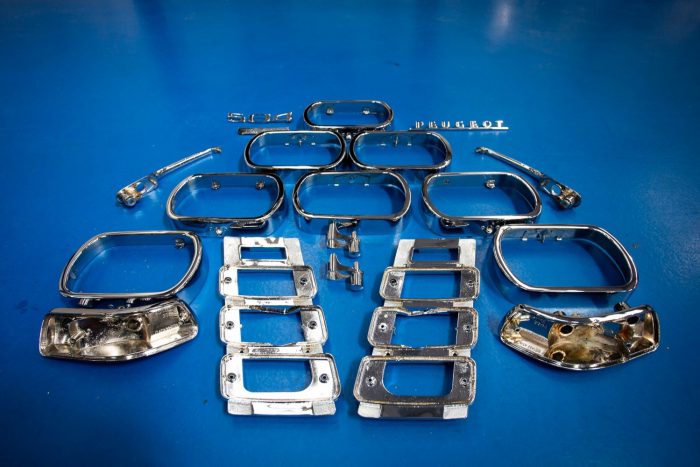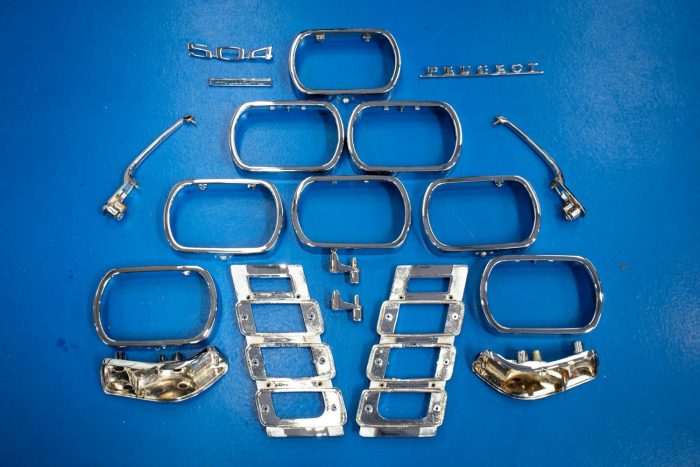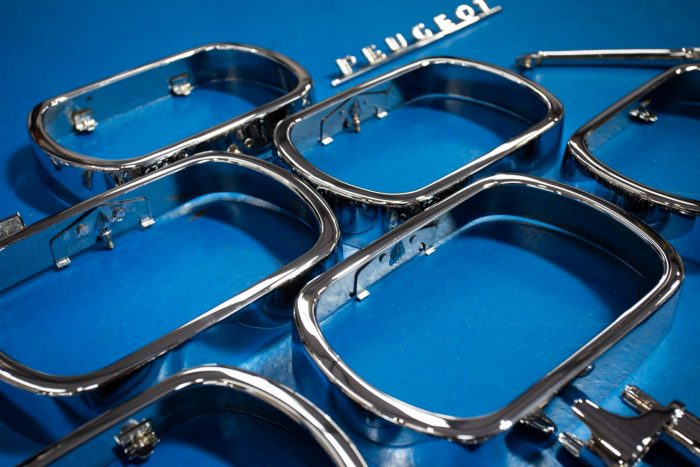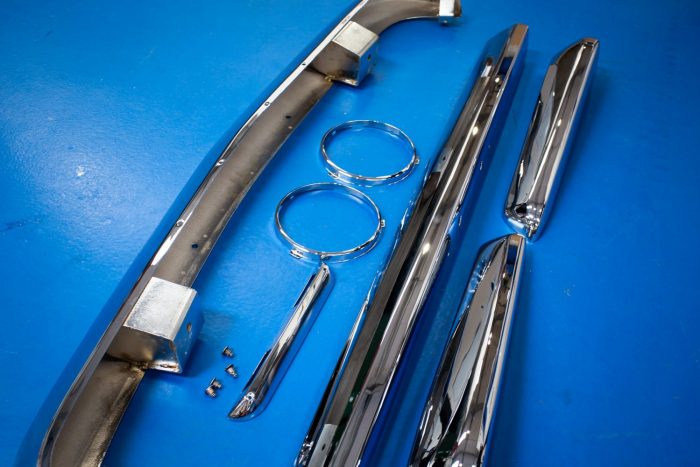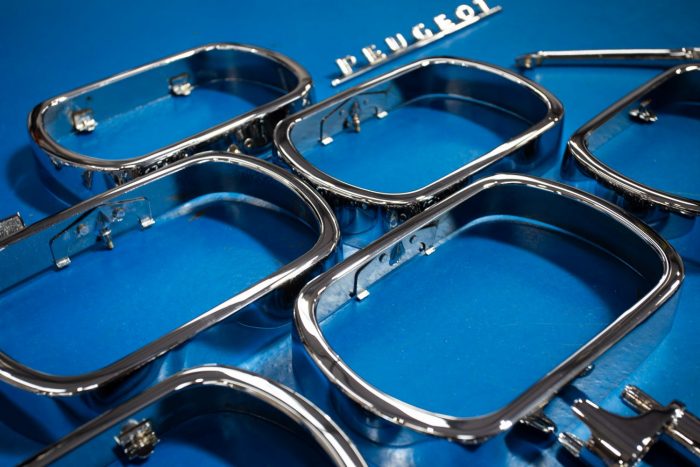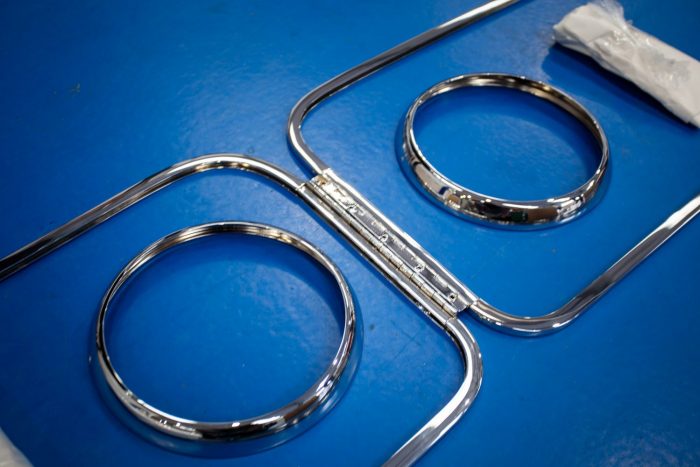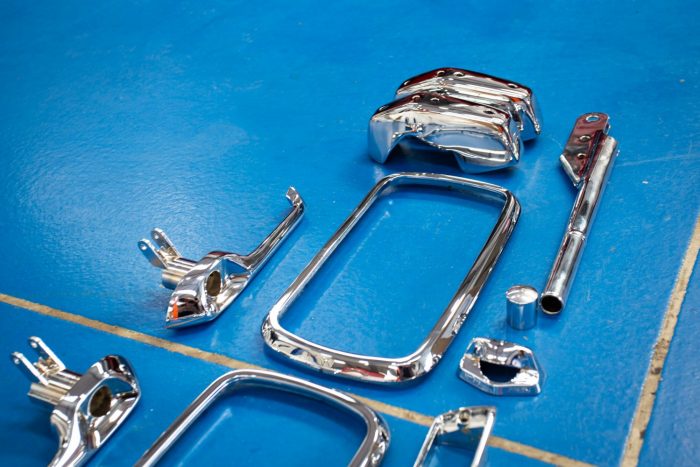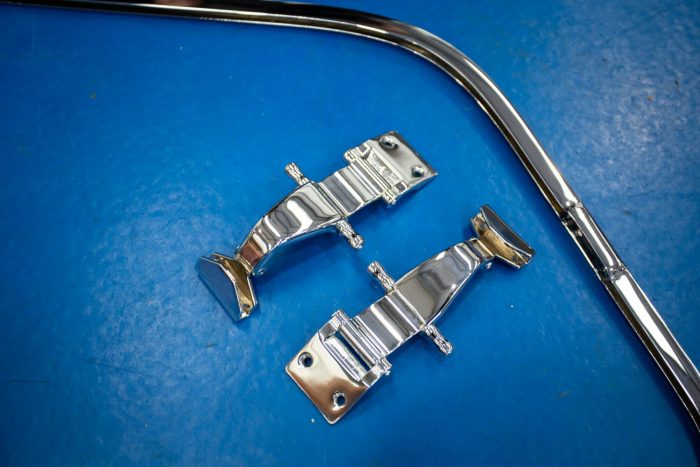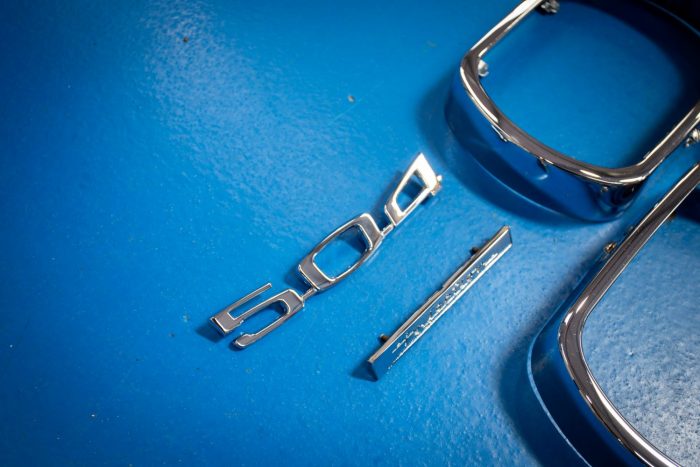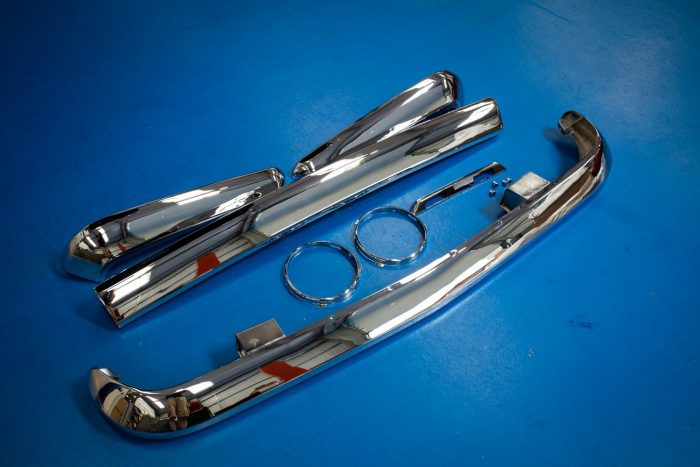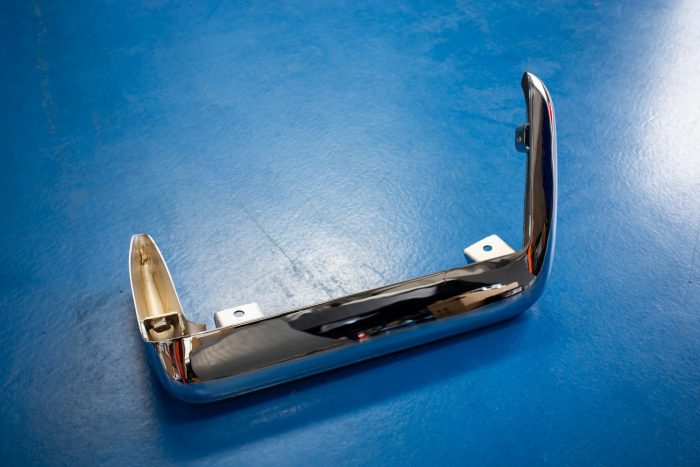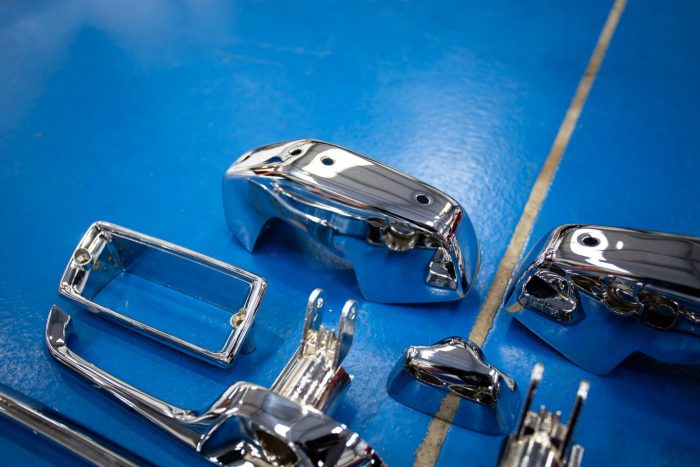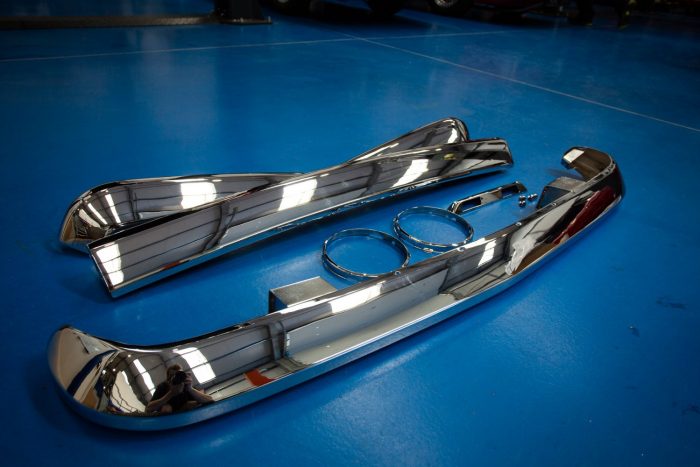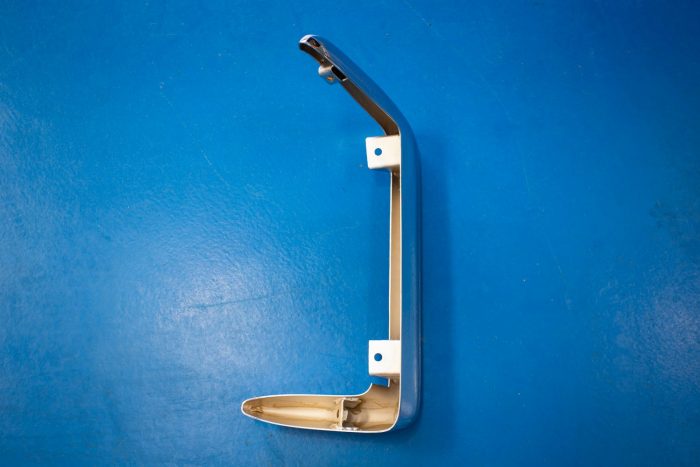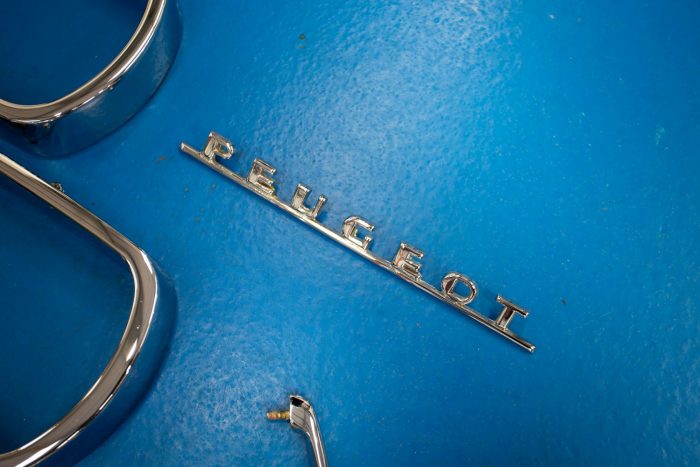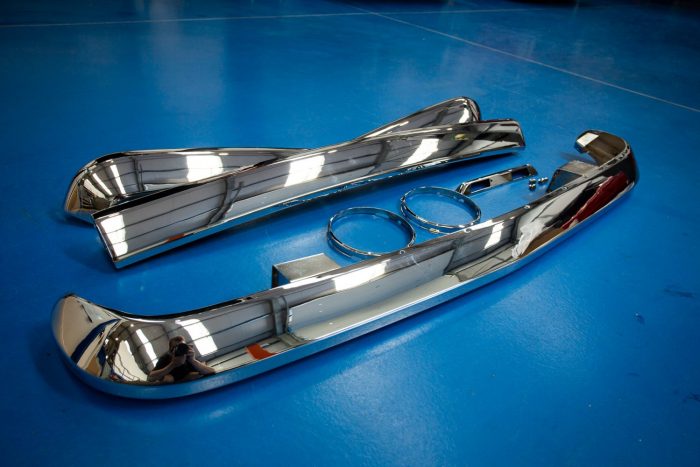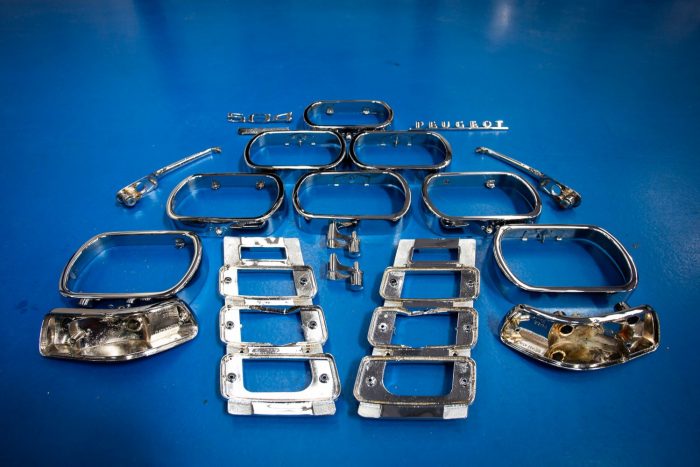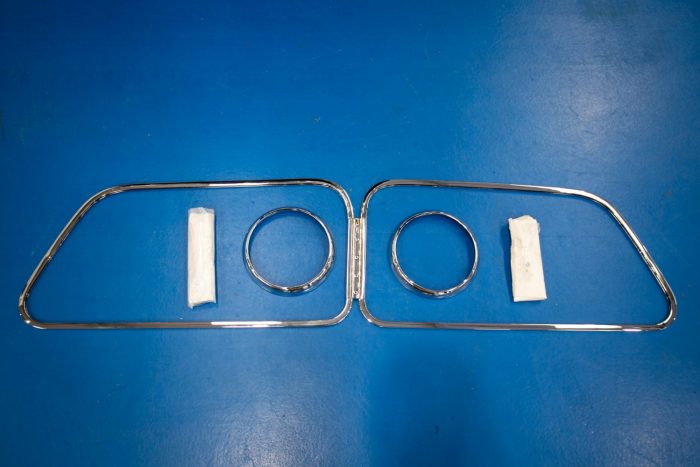Managing Director – Bridge Classic Cars
These chrome items have been completely transformed and are shining bright once more. The first step in the process of re-chroming is the stripping process. Grease, paint and rust that has accumulated on the car bumper over the years is removed.
Items are then stripped in a solution known as ‘Labere’. This solution is a perfect chemical balance to ensure the old chrome plating is removed without damaging the metal underneath.
The next step in the process is polishing to a smooth finish.
The metal has then gone through a triple plating process. First copper, applied for weather protection. Then Nickel is applied. Once the nickel layer has been applied it is time for the chrome.
The chrome plating process is a method of applying a thin layer of chromium onto a substrate (metal or alloy) through an electroplating procedure.
In simple terms, electroplating is achieved by passing an electric current between two electrodes which are immersed in an electrolyte bath comprising of chromic acid. One of the electrodes will be the substrate which is to be plated. During the flow of electricity between the two electrodes, chromium atoms are deposited in a layer on the electrode to be plated.
We have chromework here for our Peugeot 504, Mini, Triumph TR6, Ford Capri and Corvette projects.

